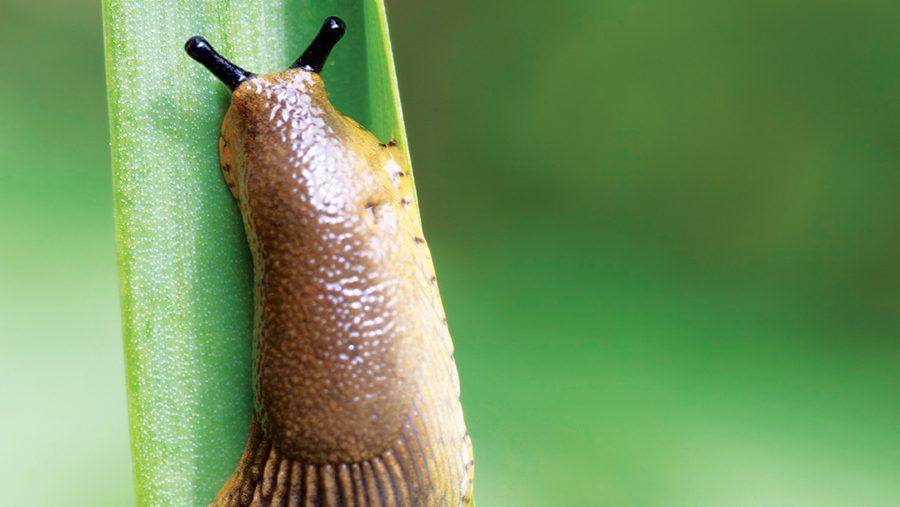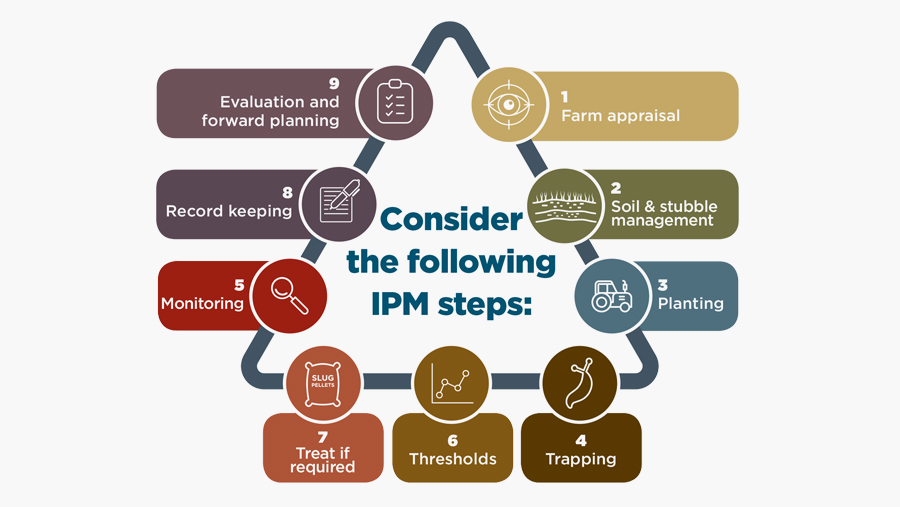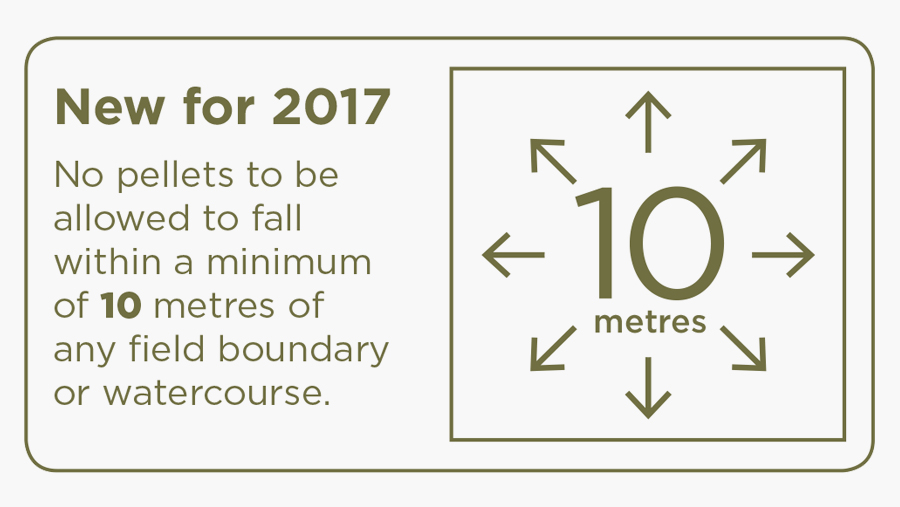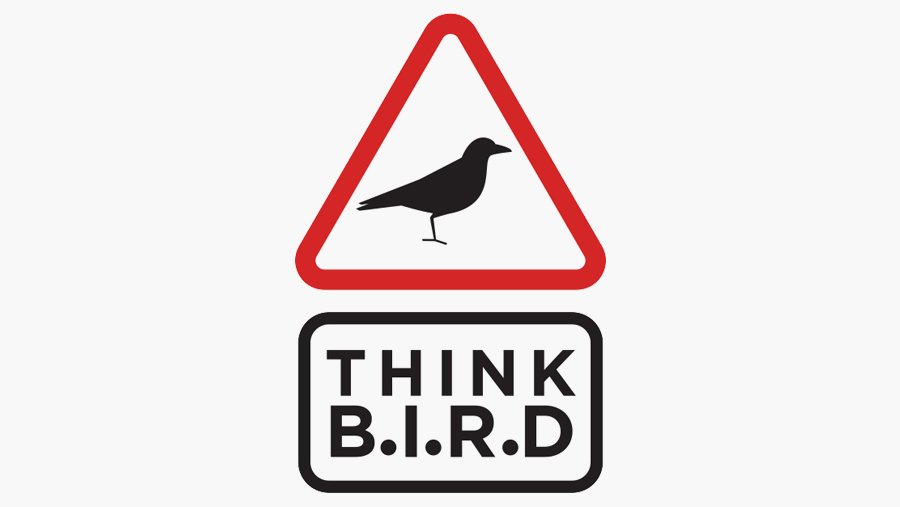Advertiser content
How to control slugs with integrated pest management
Slugs are a major pest within UK agriculture with species such as the common keeled slug (Tandonia budapestensis), the garden slug (Arion hortensis/Arion distinctus) and the grey field slug (Deroceras reticulatum) amongst those found on UK land.
In this, our latest hub, we consider slugs, integrated pest management, risk factors, slug trapping, chemical control, stewardship guidelines, applications and calibration as well as solutions such as Desidro Technology with Gusto.
Why slugs are difficult to control
Slugs are hermaphrodites and can reproduce asexually when a mate is not present, resulting in batches of around 10-50 eggs being laid at any given time, multiple times across the season (AHDB).
One slug can often lay between 100 and 500 eggs in its lifetime which spans between 6 to 18 months. It is this rapid breeding that leads slugs to be such a problem in the autumn.
Eggs are laid close to the soil surface in areas that are dark and damp: places such as holes and crevices created by cultivation.
In favourable conditions, the juvenile slugs begin to hatch and start to feed, thereby causing significant damage to crops:
It is estimated that a single slug can kill up to 50 wheat seeds within one week of sowing and decimate oilseed rape crops where seedlings are emerging.
If the eggs are laid in the spring, egg hatch is rapid and the juveniles become adults during the summer.
If the process occurs in the autumn, the eggs take longer to develop due to the colder weather, so the juveniles do not become adults until the following spring.
These adults are then able to reproduce in around 8 weeks, thus starting the cycle again.
As slugs require moisture to survive, the mild and wet autumns in recent years have provided favourable conditions for slug populations to proliferate, thereby causing increased crop damage.
This, combined with cropping practices which provide suitable conditions for breeding and overwintering, means the problem is becoming ever more prevalent.

Integrated Pest Management
Effective slug control through Integrated Pest Management
Effective slug control focuses on the use of Integrated Pest Management (IPM) to control slug numbers and to reduce reliance on chemical control measures, such as slug bait products based on either ferric phosphate or metaldehyde.
An IPM approach to slug control is more effective than relying solely on slug pellets and can also help to ensure maximum protection to the environment.
What does an IPM approach to slug control involve?
In terms of controlling slug populations, IPM involves the following steps:
- Identification and analysis of the potential risk factors associated with slug damage
- Consideration of the most suitable cultural control techniques that can be used to help reduce slug habitats and overall pressure
- Trapping and understanding thresholds to ensure treatment decisions are justified
- Monitoring of crops while they are most vulnerable and assessing if further applications are required
- Record keeping and forward planning to improve IPM programmes for the next year
- For more information about Integrated Pest Management, visit the Get Pelletwise website
Risk Factors
The following risk factors influence the population of slugs in any given situation:
- Moisture and temperature – activity, survival and reproduction are all dependent on moisture. Whilst the optimum temperature is 17°C, the grey field slug can still be active close to freezing, other species are only active in temperatures above 5°C
- Heavy soils with a high clay and/or silt content – tend to retain more moisture and also become cloddy. Slugs are more prevalent on these soil types particularly where cloddy soils are more open allowing slugs to graze on seed or newly emerging shoots
- Previous cropping – the risk of slug damage to winter wheat is much greater following a dense, leafy crop (such as oilseed rape) which has provided a moist, shaded environment and food for populations to build. Also worth noting that cover crops grown over-winter can increase slug risk to the following spring cereal crop for the same reasons
- Crop residues, organic matter and weeds – all increase risk of slugs as they increase soil moisture retention and provide both shelter and a food source
Direct drilling and delayed drilling – both increase the risk of slug damage. Generally autumn planted crops are more at risk, although a cold delayed spring can also increase risk to spring cropping - Sedbed prearation – open and cloddy seedbeds allow slugs easy movement and access to seed and emerging seedlings. Rolling cloddy seedbeds after drilling will help reduce potential for slug movement but only if sufficient moisture is there to breakdown and consolidate clods
- Other agronomic conditions – lack of nutrients, poor drainage, weed competition, cold weather can all result in prolonging the period of seed germination and crop establishment thus extending the period vulnerable to slug damage
Slug Trapping
A key step to combat slug populations effectively as part of an IPM approach is to understand where, when and to what extent slugs are causing a problem.
he best time to monitor slug populations is when the weather is mild and soil is damp. The most effective method is using refuge shelters/traps.
Each trap should consist of a tile or hardboard sheet or plant pot saucer of c25-30cm diameter or square to provide a sheltered refuge where slugs will gather.
Each trap should be baited with a food source (e.g. chicken layers’ mash is recommended – around 2 heaped teaspoonfuls per trap) to attract slugs.
IMPORTANT do not use slug pellets for this purpose.
The traps allow free movement of slugs which are more likely to visit the traps in mild temperatures and moist conditions during the night to feed and stay until the following morning when they can be counted.
In each field, 9 traps (13 in fields >20ha) should be set out in a W pattern, concentrate on areas known to suffer damage, leave out overnight and count slugs per trap the following morning.
The following thresholds indicate a risk when soil and weather conditions favour slug activity |
|
|
Crops |
Number of slugs per trap |
|
Winter cereals |
4 or more |
|
Oilseed rape (standing cereals) |
4 or more |
|
Oilseed rape (cereal stubble) |
1 or more |
Chemical Control
The application of slug pellets should always be integrated with cultural control measures associated with reducing risks but if threshold levels are reached then pellet application may be appropriate.
Two active ingredients are currently available in pelleted bait form for the control of slugs;
Metaldehyde
- Following ingestion, acts principally by causing slugs to excessively excrete mucous, leading to death by dehydration
- Slugs die rapidly in optimum conditions often on the soil surface. Product effectiveness can be measured by number of dead slugs observed and a reduction in crop damage
- Effect optimised at high temperatures (c20°C), reduced effect at lower temperatures
- Activity specific to slugs and does not harm predatory ground beetles which are a natural predator of slugs
Ferric phosphate
- Following ingestion, acts on the digestive system causing the slug to stop feeding quickly
- Slugs die within 3-6 days often underground. Should be noted that product effectiveness should be measured by a reduction in crop damage rather than evidence of dead slugs observed
Slug trapping and regular crop walking are the most obvious methods for monitoring slug populations, but Adama’s #SlugAware tool (part of the WaterAware smartphone app) can also be used to predict when slugs are likely to be active.
The #SlugAware app is designed to protect the longevity of metaldehyde-based slug pellets such as Gusto 3 by ensuring pellets are only applied when absolutely necessary.
By considering factors such as soil type, humidity, soil moisture, temperature, cultivation method, wind and current and previous crops, #SlugAware gives growers a low, medium or high threat of slug activity warning based on their land’s specific conditions in a given 24 to 72 hour period.
With this information to hand, growers can be better equipped to make more informed crop protection decisions, thereby ensuring key active ingredients are only ever applied at the right time and thus reducing the risk of these chemicals being lost from the crop protection armoury due to regulatory pressures.
Controlling slugs with Desidro Technology
Find out how Gusto slug pellets work and why they are so durable and long-lasting compared to conventional pellets.
Stewardship Guidelines
When slug pellets containing metaldehyde are used, best-practice stewardship must be followed in order to minimise risks to water and wildlife.
There are four stewardship steps that should be taken to ensure that metaldehyde is used in ways that act to enhance environmental protection:

Step 1: Integrated Pest Management
Metaldehyde slug pellets MUST only be used as part of an Intergrated Pest Management programme to help minimise slug infestation and reduce the need for treatment.

Step 2: THINK field factors:
Take a field-by-field approach to assess the risk of metaldehyde reaching watercourses:
- Soil – is the soil heavy and under-drained?
- Slope – is the field on a gradient?
- Stream – is there a ditch or watercourse in close proximity?

Step 3: Follow Stewardship Guidelines
New guidelines were introduced in 2017 to enhance the protection of water and to introduce new protection measures for birds and small mammals which feed and breed in hedgerows.
The full guidelines can be found here.

Step 4: think B.I.R.D.:
Before making any metaldehyde application, stop and THINK:
- Buffer: 10m buffer zone to all field boundaries
- I am legal: are you suitably qualified and using equipment that has been tested to the required standard?
- Records: are all your records up to date and robust?
- Dose: are you applying the correct dose according to the label and MSG guideline recommendations?
Application and calibration
All equipment used for the application of slug pellets should be calibrated to the required standard to ensure it is fit for purpose and to prevent over- or inaccurate application.
All applicators should be calibrated prior to use and according to the product being used and rate at which it is to be applied.
Machines should also be recalibrated between seasons of use and whenever there is a change of product.
Download the Get Pelletwise campaign’s interactive machinery setting charts.
In addition to regular calibration checks, all application equipment should also be tested to the required standard to ensure it can spread the desired product over a uniform pattern:
In order to comply with the Sustainable Use Directive, all slug pellet application equipment over five years old should have been tested by 26th November 2016, and then every six years thereafter.
If equipment is less than five years old it needs to be tested by its fifth anniversary, and then every six years thereafter.
Provided by
ADAMA is a leading manufacturer and distributor of crop-protection solutions. With a heritage of nearly 70 years and over 4500 employees in more than 120 countries, ADAMA has world-leading expertise in a range of product categories including a full range of fungicides, herbicides, insecticides, plant growth regulators and molluscicides.
ADAMA’s crop protection products are available in the UK through leading agro-chemical distributors and agronomy companies.
Technical helpline 01635-876-622
